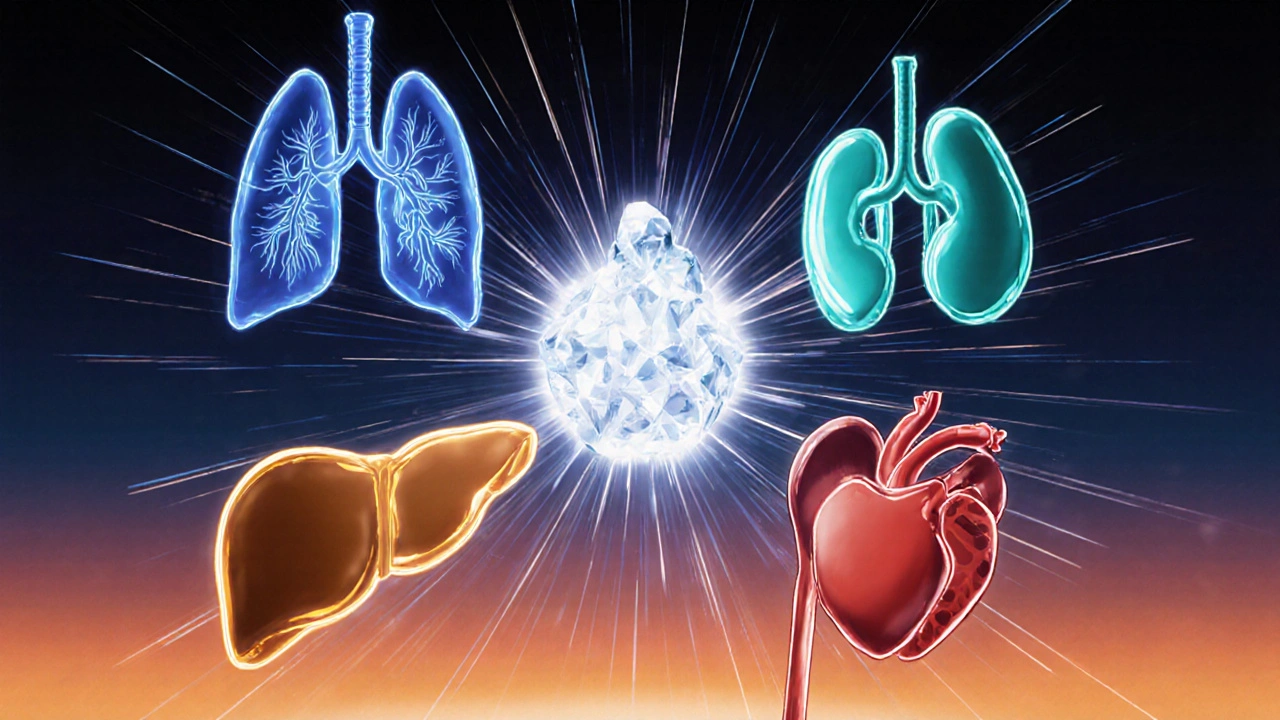A deep dive into pirfenidone’s anti‑fibrotic action, its approved use for IPF, and emerging evidence for treating systemic sclerosis, liver cirrhosis, renal fibrosis and more.
Fibrotic Diseases: Causes, Treatment Options, and What’s New
When dealing with fibrotic diseases, a group of conditions where excess scar tissue builds up in organs, disrupting normal function. Also known as fibrosis disorders, they can affect lungs, liver, kidneys, or skin. One of the most common forms is Pulmonary Fibrosis, progressive scarring of lung tissue that makes breathing difficult, while Liver Fibrosis, the buildup of connective tissue in the liver that can lead to cirrhosis often appears alongside chronic inflammation or viral hepatitis. Managing these conditions usually relies on anti‑fibrotic therapy, drugs or interventions designed to slow or reverse scar formation, combined with lifestyle adjustments and regular monitoring.
Key Factors That Influence Diagnosis and Treatment
A reliable diagnosis starts with the right fibrosis biomarkers, blood‑based or imaging markers that signal the extent of organ scarring. High‑resolution CT scans, liver elastography, and serum tests like KL‑6 or Pro‑C3 give doctors a real‑time picture of disease activity. These tools not only confirm the presence of a fibrotic disease but also help clinicians decide when to start anti‑fibrotic therapy, adjust dosages, or consider clinical trial enrollment. In practice, doctors pair biomarker trends with symptom checks – shortness of breath, fatigue, or jaundice – to create a personalized care plan.
Therapeutic options have broadened in recent years. For lung scarring, drugs such as pirfenidone and nintedanib have shown the ability to slow decline in lung function. In the liver arena, research is pointing to agents that target the TGF‑β pathway, a major driver of collagen production. Beyond pharmaceuticals, patients benefit from pulmonary rehabilitation, low‑salt diets, and avoiding alcohol or toxins that accelerate fibrosis. Physical activity, when tailored to the individual’s stamina, can preserve muscle mass and improve overall quality of life.
Because fibrotic diseases are chronic, long‑term monitoring is crucial. Regular follow‑up appointments let doctors track biomarker shifts, adjust therapy, and catch complications early – for example, respiratory infections in pulmonary fibrosis or portal hypertension in liver fibrosis. Support groups and mental‑health resources also play a role; living with a progressive condition can strain emotional well‑being, and shared experiences often provide practical coping tips.
Below you’ll find a curated collection of articles that dive deeper into each of these topics. From detailed drug comparisons to lifestyle guides and the latest research on biomarkers, the posts are organized to give you actionable insights no matter where you are on your fibrotic disease journey.

